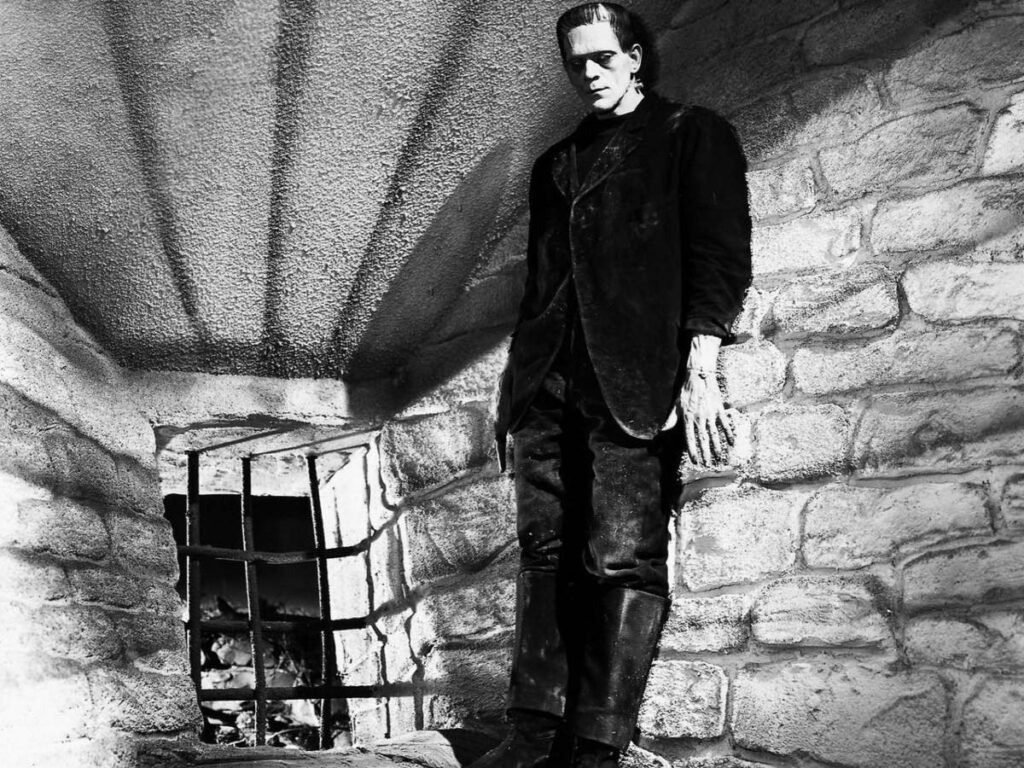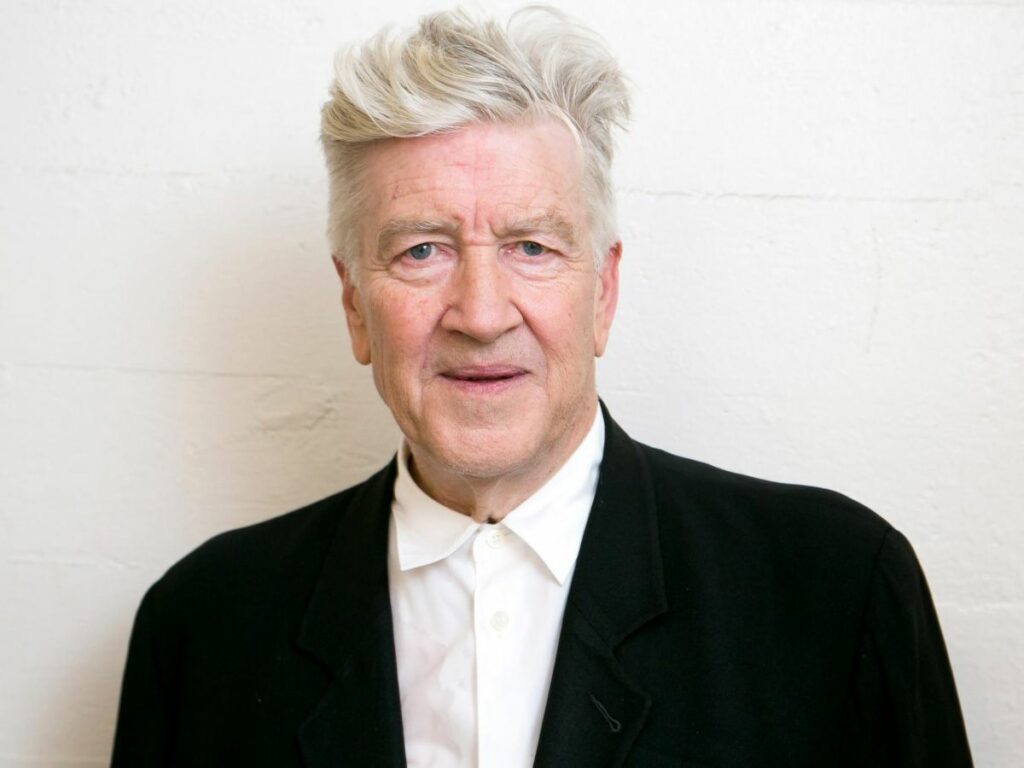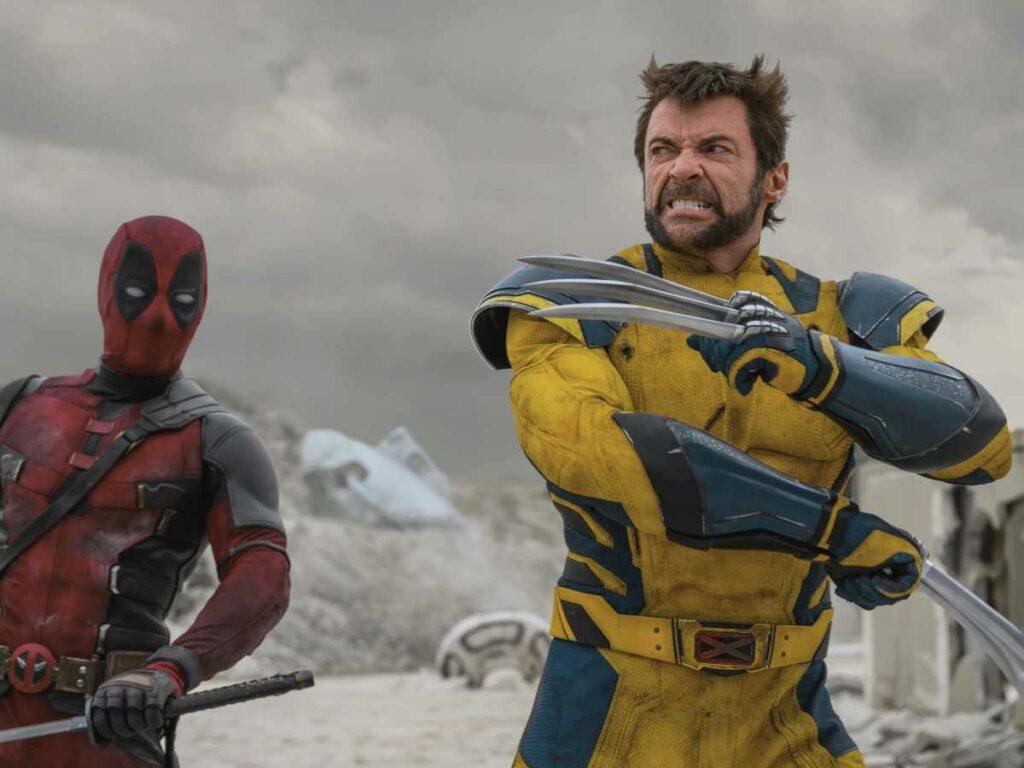From Alien (1979) to The Platform (2019), here are some of the best sci fi horror movies of all time.
The intersection of science fiction and horror genres sounds so perfect since both share a similar theme. Fear. Of course, the horror genre has supernatural elements that are beyond the explanation of science. Similarly, science-fiction doesn’t have to be scary as it can rather inculcate a sense of wonder. But from the fear of disease, fear of death to the fear of the unknown, and fear of technology, the fusion between sci-fi and horror can shine a light on the dark side of the human condition and the universe.
Science-fiction narratives are inherently built with a dark side. Most of its motifs including AI and high-tech robots carry the possibility of going rogue and wreaking havoc upon the human race. HAL in Stanley Kubrick’s landmark sci-fi 2001: A Space Odyssey is a classic example. But sci-fi horror goes beyond the notions of sinister technology and directs its dark perception on many other human curiosities. This includes the human race’s search for extraterrestrial life and scientists’ no-holds-barred research on biological weapons.
WATCH: Alien Romulus (2024) Review: A Worthy Sequel?
Sometimes the dark narratives can take the tone of a Luddite and may sound too far-fetched or silly. Yet the stories narrated under the guise of science-fiction horror often convey the very real fears about human nature and about the intimidating, largely unknown nature of cosmos.
I’m steering clear of zombie outbreak films for the list. Mostly because I consider zombies to be a straight-up horror element despite the little talk of viruses in those films. Very quickly then, here are what I think some of the best sci fi horror movies:
Best Sci-fi Horror Movies
25. The Platform (2019)

Galder Gaztelu-Urrutia’s The Platform shares its plot points with Cube (1997) and Bong Joon-ho’s post-apocalyptic action/thriller Snowpiercer (2013). It also reminds us of Denis Villeneuve’s imaginative short Next Floor (2008). The film is set in a dystopian multi-level prison. Each cell, housing two inmates, is connected by a central hole, creating a vertigo-inducing view. A food-laden table descends through this hole, floor by floor.
The film, while not heavily sci-fi (except the Orwellian dystopian set-up) uses this grim setting to craft an engaging allegory about class divisions, human greed, and oligarchic capitalism, despite the mystery surrounding the experiment’s purpose and orchestrators.
24. Event Horizon (1997)

Paul W.S. Anderson’s critically panned box-office flop actually effectively blends science fiction and horror. Of course, it makes no attempts to establish its black hole theories in a plausible manner. Moreover, it borrows heavily from Alien, The Shining, and Hellraiser. Despite the unoriginality, it had an amazing cast — that includes Sam Neil and Laurence Fishburne and delivers chilling horror imagery.
The plot unfolds in the future, with a deep-space crew investigating the mysterious reappearance of the spaceship Event Horizon in Neptune’s orbit. The crew discovers the ship’s use of wormholes to move through space, which has unleashed a terrifying unknown. The film uses graphic violence to engage viewers with the allure of the unknown.”
23. Cloverfield (2008)

Matt Reeves’ Cloverfield is seen as a Godzilla movie for the YouTube-era. But critics saw this monster sci-fi action/horror replicating the fear and paranoia of the 9/11 aftermath. The film opens at a party in a Manhattan apartment. Young yuppie Rob Hawkins is in town before leaving for Japan. His friend Hud is videotaping all the events of the celebrations. Suddenly, an explosion is heard and the decapitated head of Statue of Liberty is thrown on the street. Rob and his friends run for safety as a monster terrorizes the city.
The question of the monster’s origins remains ambiguous, although a lot of theories were offered. From alien invasion to biological weapon experiment gone wrong. Cloverfield suffers from the typical weaknesses of the found footage narratives. But despite the shaky cam techniques, the film manages to scare us deeply with little glimpses of the beasts.
22. The Mist (2007)

Frank Darabont’s sci-fi horror film is an adaptation of Stephen King novella. The narrative is set in a small coastal town in Maine. A mysterious mist surrounds the town after a thunderstorm. Protagonist David (Thomas Jane), a book illustrator, is inside a local mini-mart with his son and a neighbor when chaos ensues. Huge carnivorous insects and Lovecraftian monsters have invaded the town, probably due to a scientific experiment gone wrong. Moreover, the post-9/11 subtext is apparent in what unfolds inside and outside the supermarket.
The Mist interestingly is less about the monsters and more about the evil that lurks within humans. Despite the shoddy CGI work, the film largely works because of the way it captures the primal fear of human beings and the kind of horrors that leads to. And ofcourse, the painful, shocking ending is hard to forget.
21. Pitch Black (2000)

Hollywood executives might have pitched Pitch Black as Alien meets Diehard. David Twohy’s derivative yet entertaining sci-fi horror film revolves around a notorious criminal named Riddick (Vin Diesel). The spaceship that’s transporting the interstellar criminal crash lands on an alien planet. While there’s a power struggle between the survivors, nasty creatures that live in the cave system of the planet start hunting down the humans. As the planet goes into a thirty day solar eclipse, survival sounds impossible. Nevertheless, Riddick is perfectly suited to take on the creatures, since the brawny man can perfectly see in the dark.
Pitch Black is a tightly scripted film with minimalist but well deployed CGI effects. Though a lot of narrative beats are predictable, the monster action and scare quotient keep you engaged.
20. Re-Animator (1985)

Stuart Gordon’s schlocky Lovecraft-ian horror tale could serve as a companion piece for Sam Raimi’s Evil Dead and Peter Jackson’s BrainDead. Clearly, the film is not for the squeamish. The narrative revolves around Herbert West (Jeffrey Combs), an intelligent yet unhinged medical student who is obsessed with bringing back the recently deceased. First he tries to re-animate the cat, and then procures a cadaver. Herbert injects a fluorescent green serum to bring life to the corpse. Despite being based on a 1921 magazine serial by Lovecraft, the screenwriters reworked it into a splatter-fest Frankenstein monster story.
Nevertheless, Re-Animator works because it is outrageously shocking and never takes itself seriously. In fact, most of its repulsive episodes possess a darkly humorous tone. The grotesque elements are achieved through a mix of animatronics and practical effects.
19. Altered States (1980)

The visually dazzling Altered States was British filmmaker Ken Russell’s first American film. American playwright and Oscar-winning screenwriter Paddy Chayefsky wrote the script. The film focuses on research scientist Eddie Jessup’s (William Hurt) attempts to expand the frontiers of human consciousness. He takes hallucinogens and floats in a sensory deprivation tank to unlock different states of consciousness which could lead to a groundbreaking discovery including a cure for schizophrenia.
Altered States has the familiar sci-fi horror archetypes of obsessive scientist, loyal assistant and caring love interest. But what’s absolutely interesting about the film is its execution and top-notch performances. Chayefsky’s somber script and Russell’s satirical directorial tone create an unnerving experience. Although the narrative leaps sound silly at times, Eddie’s scary transformation is vividly realized.
18. Possessor (2020)

Brandon Cronenberg, son of the body horror master David Cronenberg, slickly blends the gore and pulpy sci-fi elements in his second feature. The premise focuses on a hit-woman named Tasya (Andrea Riseborough), who uses brain-implant technology to inhabit other people’s bodies and carry out assassinations. She works for a sinister corporation whose targets are selected to serve some financial purpose. The film opens with a gruesome killing sequence, and it signals that Tasya is under a severe mental strain that can push her to lose control.
Possessor shares its style and themes with Ghost in the Shell (1995), Inception (2010), and eXistenZ (1999). But it’s not a simple rehash of those narratives. Brandon creates something more shocking as well as unique using those familiar stylistic and thematic elements.
17. Annihilation (2018)

Jeff VanderMeer’s speculative fictions are part of the New Weird literary genre. New Weird is basically an amalgamation of sci-fi, fantasy, and horror but without following the conventions of those genres. The fictions of New Weird take place in more complex reality and don’t offer any easy answers. Alex Garland’s Annihilation is an adaptation of the first novel in Jeff VanderMeer’s Southern Reach Trilogy. The narrative revolves around Lena (Natalie Portman), a biologist who joins a hand-picked team of female professionals. They are sent to investigate an eerie, inexplicable zone known as The Shimmer.
A meteor’s impact has caused the Shimmer, which is now home to many mutated plants and animals. Garland doesn’t rely on sudden, explosive action. It’s rather a character-oriented horror film which uses the uncanny scientific phenomenon to explore the nature of humanity.
16. Predator (1987)

John McTiernan’s Predator opens with an elite team of combat soldiers sent on a mission into the intimidating jungles of Central America. They are sent to rescue political hostages and destroy the guerrilla forces. But they stumble upon the hunting grounds of an intelligent alien creature. What stays with me even after all these years is the thundering musical score (by Alan Silverstri) and the horrific violence that brings an immediacy to the nerve-wracking hunt. The narrative bestows upon the antagonist supreme intelligence and a set of powers that always puts it ahead.
Hence, the exciting and tense factor of the film is watching the alien predator getting duped by the smart tactics of Arnold’s somber yet charismatic protagonist. Predator’s blend of machismo, sci-fi and riveting suspense is often imitated but has never been surpassed.
15. Prometheus (2012)

The success of Alien spawned three sequels, many knockoffs and even an appalling crossover feature. Alien vs. Predator. But apart from James Cameron’s Aliens, nothing came close to realizing the terrifying scope of the original Alien. Therefore, it was wonderful news for fans of sci-fi horror when Ridley Scott returned to direct the prequel to Alien, titled Prometheus. The prequel was very expansive in terms of scope although the narrative ambiguities and pacing issues frustrated a lot of viewers.
Prometheus brought back the horror quotient to the Alien franchise while also blending philosophy and Greek mythology. If we set aside preconceived notions, Scott’s Prometheus offers lots of interesting ideas. The narrative revolves around a spaceship crew’s search for the Engineers – primordial humanoid beings who are thought to be responsible for cultivating the seeds of life on Earth.
14. Cube (1997)

Canadian filmmaker Vincenzo Natali’s existential sci-fi horror revolves around a group of strangers stuck inside a maze of cubes. They don’t have the memory of how they got inside the cube. Each side of the cubical room including the ceiling and door has a door. And each door leads to another cube. Some cubes have vicious traps that could instantly kill them, and some are safe. All the trapped individuals have some unique talent which can be applied to escape the cube. However, that doesn’t happen.
The fundamental horror element of Cube is the inscrutable psyche of the characters. There’s a constant tension over people’s behavior and true motives. It’s also a very atmospheric film with impressive sound design. Eventually, Cube leaves us with a big mystery, regarding the creators of such mind-boggling maze.
13. A Quiet Place (2018)

John Krasinski’s horror sci-fi has the familiar premise of deadly alien invasion. But what’s refreshingly original is its simple yet brilliant details. A Quiet Place revolves around a family of four. They try to survive in the post-apocalyptic world where a fearsome alien race seeks out the remaining humans. The rapidly moving spider-like alien monsters are blind, but their hearing is so sharp. The threat of the aliens is revealed in the earliest vignette when the family’s youngest kid is killed due to a simple mistake.
John Krasinski tells a very intimate story of a family smartly adjusting to the ups and downs of a post-apocalyptic existence. Sound and silence are fascinatingly used to amplify the horror quotient. Despite a relatively predictable arc and obvious foreshadowing, the film stays solid due to the touching human drama.
12. They Live! (1988)

John Carpenter’s satirical sci-fi horror gained a cult following like most of the films in his oeuvre. It was a minor commercial success during its release and largely dismissed as a B-movie action flick. They Live follows the alien-invasion tradition of Body Snatcher films. But it withholds a more subversive message about unrestrained capitalism. It revolves around an underclass protagonist, whose worldview changes when he finds a pair of mysterious sunglasses. He sees the world for what it is. Besides, the glasses expose the true face of a parasitic, upwardly mobile alien race which has successfully infiltrated the Earth.
They Live is a satire on consumerism and mindless conformity. The director also uses the ghoulish alien race to indict the political stance of Reagan-era America. In fact, Carpenter’s terrifyingly prophetic worldview sounds more relevant than ever.
11. Invasion of the Body Snatchers (1978)

It’s hard to make a good remake, let alone improve upon the original. Philip Kaufman’s 1978 version of the acclaimed 1956 sci-fi classic is more unsettling and remains more relevant. The story revolves around an alien invasion. Mysterious pods produce human-like creatures who replicate the residents of a small-town. Both the versions come across as an allegory for the paranoia surrounding the Cold War era. But Philip Kaufman transplants the narrative from small-town to a city. He perfectly uses the sprawling urban environment to amplify the sense of disorientation and alienation.
Kaufman treats the cryptic alien invasion as a frightening type of epidemic which strongly resonates with the era of COVID-19. It culminates with one of the most brilliant twist endings in cinema. A strong cast including Donald Sutherland, Brooke Adams, and Leonard Nimoy also helps the film.
10. Tetsuo: Iron Man (1989)

Japanese filmmaker Shinya Tsukamoto’s second feature turned out to be an iconic cult film which garnered him global acclaim. The film revolves around a peculiar individual with a metal fetish. He inserts scrap metal into his body and experiences a combination of pain and ecstasy. While experimenting, he crashes into an oncoming car. The couple in the car, thinking he is dead, dumps him in a remote location. The metal fetishist takes his revenge in the weirdest manner.
Tetsuo owes a lot to Cronenberg’s body horror. Shinya Tsukamoto – who also plays the metal fetishist – cites Videodrome as one of his key influences. From an aesthetic standpoint, Tsukamoto was also inspired by David Lynch’s Eraserhead (1977). Tetsuo: Iron Man is a gritty, stomach-churning commentary on Japan’s increasing dependence on technology. Eventually, it’s a film with great energy and experimentation.
9. Under the Skin (2013)

Jonathan Glazer’s scary and sexy sci-fi is loosely based on Michael Faber’s 2000 novel of the same name. Scarlett Johansson plays the alien in humanoid form, who travels around the tough streets of Glasgow, Scotland to pick up men. The true purpose behind the seductive alien’s selection of men is unclear yet what it does with them looks very terrifying. The alien doesn’t possess any of the human emotions like compassion or pity. Yet, a crisis renders the alien vulnerable.
Stanley Kubrick is a chief inspiration for Glazer’s aesthetic style. But in Under the Skin, Glazer also pays homage to Nicolas Roeg and David Lynch. Scarlett Johansson’s stoic yet mesmerizing screen-presence alongside Mica Levi’s brilliant score adds to the film’s visual impact. Eventually, it gets under our skin to question us: what it means to be a human?
8. The Fly (1986)

Starting with Rabid (1977) and The Brood (1979), David Cronenberg has been the master of body horror. With Fly, he innovatively brings together the sci-fi and horror elements. Jeff Goldblum plays Seth Brundle, a scientist obsessed with creating a teleportation machine. His teleportation pods are capable of dismantling, transmitting, and reassembling matter in a fraction of time. When Seth attempts to transport himself, he fails to notice a housefly that’s trapped in the chamber with him. As a result, Seth’s body gradually changes on a genetic level.
The horror of Seth’s metamorphosis is hard to describe in words, and owes a lot to special effects as well as creative make-up. The film was based on George Langelaan’s 1957 short story of the same name. But Cronenberg updates the story premise with a better comprehension of genetics and DNA splicing.
7. Dr. Jekyll and Mr. Hyde (1931)

Rouben Mamoulian’s spine-tingling sci-fi horror hybrid is one of the most successful adaptations of Robert Louis Stevenson’s 1886 novella. The story deals with the duality of human nature which postulates that every human being has both good and evil within them. Dr. Jekyll is fascinated by this dichotomy and works on an experiment to separate the ‘good’ from the ‘evil’ in order to advance humankind’s progress. This unwittingly leads to the creation of a hideous persona named Hyde. Soon, Hyde increasingly takes over Dr. Jekyll and wreaks havoc in his life.
Mamoulian’s version is a visually rich pre-code horror film (era before the strict censorship guidelines) that’s dazzling as well as violent. The transformations of Dr. Jekyll are staged in a compelling manner. Frederic March’s fantastic performance in the titular role earned him an Oscar.
6. Videodrome (1983)

In Videodrome, similar to his earlier film Scanners (1981), Cronenberg delves into the unsettling fusion of the human body and technology, a theme also present in his latest work, Crimes of the Future (2022). The film follows Max Renn (James Woods), an unscrupulous owner of Channel 38, a TV station airing soft-core pornography and violent B-movies.
Renn’s engineer intercepts transmissions from Videodrome, a channel broadcasting eerily realistic scenes of sexual violence and torture. As Renn investigates the source, he begins experiencing hallucinations.
Videodrome is a potent metaphor for the pervasive influence of visual media on our minds and society. It also explores themes of faith and reality, adding to its relevance and impact.
5. The Terminator (1984)

James Cameron’s blockbuster hit, although labeled as a sci-fi action, features a bleak atmosphere and a terrifying villain that makes it borderline horror. Arnold’s T-800 in Terminator is a Michel Myers-like figure (from Halloween) who is sent from the future to kill Sarah Connor (Linda Hamilton). Sarah is a simple young woman who gives birth to John Connor, the future leader of the human resistance movement who wages war against the cyborgs.
The cinematography and lighting choices cast Los Angeles as a broken-down city that’s full of exuberant punks and world-weary cops. In his relentless pursuit for Sarah, T-800 casually dispatches people like a slasher villain. Moreover, the nightmarish dream sequences expand the horror quotient of the narrative. While T2 is a great film in its own way, it doesn’t have much of the basic horror elements found in the 1984 film.
4. Godzilla (1954)

The 1933 King Kong and Ishiro Honda’s Godzilla (Gojira) are the pioneers of monster movies, but their origins differ. Godzilla symbolizes the fear of the atomic age and potential nuclear disaster, a poignant message from Japan, a country scarred by atomic bombings. Roland Emmerich’s 1998 film, however, missed this profound subtext, treating Godzilla as mere spectacle.
To truly appreciate Godzilla, one must watch the original film Gojira. It’s not just a monster movie; it’s a thrilling narrative of Godzilla’s fiery rampage through Tokyo. Unlike Hollywood’s stylized destruction, Honda emphasizes the devastation to deliver a powerful anti-war message.
3. Frankenstein (1931)

Mary Shelley’s 1818 novel is probably the first sci-fi horror fiction. James Whale’s iconic screen adaptation fused the ‘mad scientist’ archetype with gothic horror as Dr. Frankenstein conducts reanimation experiments in his isolated gothic castle, resulting in the creation of the ghastly monster portrayed by Boris Karloff, who evokes both terror and pathos.
Interestingly, in Whale’s Frankenstein, the true terror lies not with the monster but with the humans. While the monster unintentionally kills an innocent person, it is the humans’ God-complex, hive mind, and hysteria that bring about destruction.
The film captures anxieties related to scientific discovery and humans’ fear of the unknown, resonating even more in this era of AI and robotics. The notion of science gone wrong remains a prevalent concern.
2. The Thing (1982)

John Carpenter’s The Thing and Steven Spielberg’s E.T., released in the same year. E.T. broke box-office records and sparked a trend of ‘friendly alien’ films, while The Thing, a grotesque sci-fi horror, flopped. However, over time, The Thing has amassed a cult following. The film, an adaptation of John Campbell’s 1938 novella Who Goes There?, was previously made into a movie in 1951. Yet, Carpenter’s version stands out for its intense, fear-inducing atmosphere.
The plot centers on an isolated American research team in Antarctica who discover a lethal alien frozen in ice. This creature can perfectly mimic its victims, a concept brought to life through inventive practical effects. Carpenter masterfully amplifies the fear of the unknown, making The Thing a profound and stylized horror experience.
1. Alien (1979)

Ridley Scott’s claustrophobic sci-fi turns a spaceship into a haunted house. The plot revolves around a space crew who, after responding to a distress call, unknowingly bring a deadly life form aboard their ship. The film is a product of innovative collaboration, with screenwriter Dan O’Bannon drawing inspiration from classic space monster movies like The Thing from Another Planet (1951), and Swiss artist H.R. Giger creating the menacing design of the alien creature. The film’s horror is amplified by its Oscar-winning production design.
Eventually, Ridley Scott’s cool and astute direction seamlessly blends sci-fi and horror elements. Alien also set the precedent for female action heroes. James Cameron directed the sequel Aliens (1986) which he smartly turned into an edge-of-the-seat action thriller.
Conclusion
Here we are then! These are, arguably, some of the best sci fi horror movies ever made. Sci-fi horror has nowadays become its own sub-genre. However, we need more diverse films in the genre that don’t solely rely on the confines of a spaceship or hostile alien race. If you are done watching the above, check out Cube director Vincenzo Natali’s Frankenstein-type sci-fi horror, titled Splice (2009); Scanners (1981), Pandorum (2009), Beyond the Black Rainbow (2010), and Color out of Space (2019).




